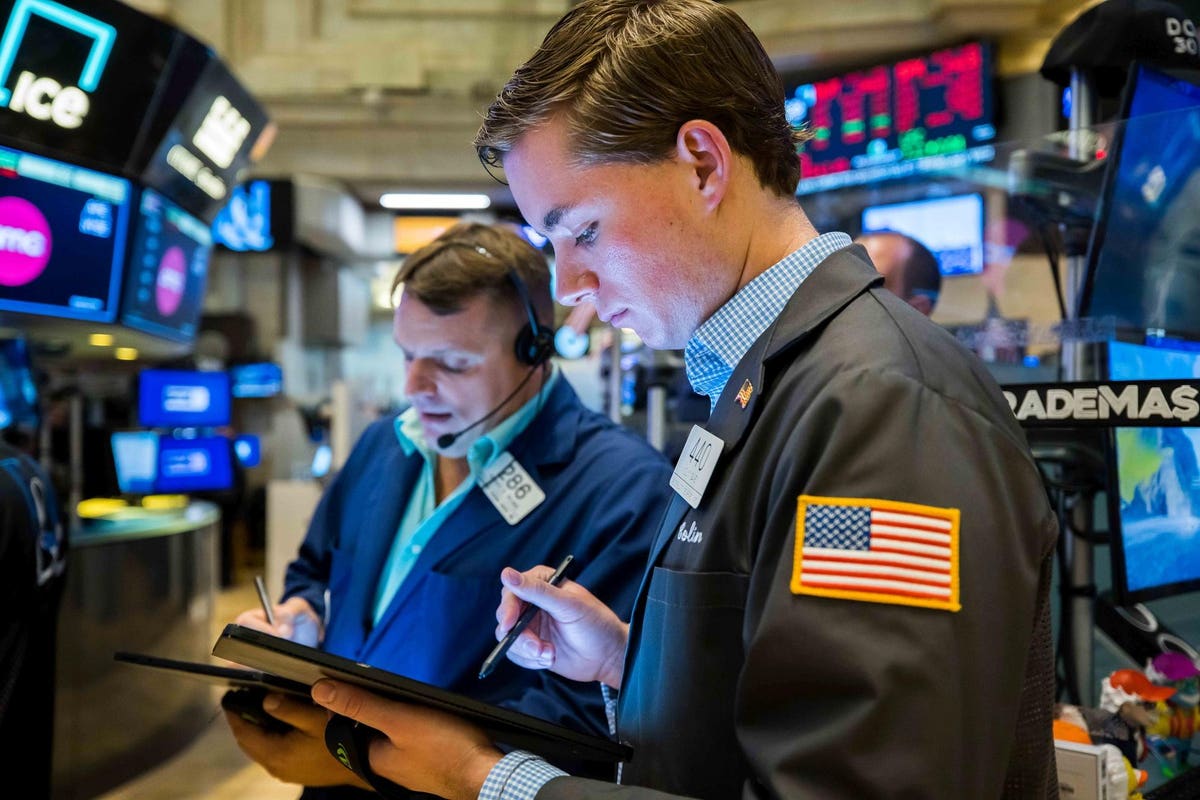Interest rates have soared in the last few months. As that happened, stock averages went way down — taking a smaller-than-average bite out of Generative AI stocks, based on my own index.
Does this drop present an opportunity for investors to buy these stocks? Here are two reasons for optimism about growth in Generative AI:
- Companies are in a hurry to incorporate Generative AI into their businesses.
- Companies that supply the services, software, and hardware needed to help companies do that are enjoying rapid growth.
Sadly, investors must wait to enjoy the bigger gains that could come when Generative AI startups go public.
Higher Interest Rates And Lower Stock Prices
Interest rates have popped since the end of June. Stock indices such as the S&P 500 and Nasdaq — which peaked at the end of July — have since lost 8% of their value.
Here is how much interest rates have risen between the end of June and October 5, according to the Wall Street Journal:
- 10-year treasury note yields rose 0.9 percentage points from 3.84% to 4.74% — up 23%.
- 30-year mortgage rates jumped 0.7 percentage points from 7.2% to 7.9% — up 10%.
From their July 31 peaks to October 5, the two stock indices have fallen 8%. The S&P 500 fell 8% from 4,607 to 4,258 while the Nasdaq declined from 14,446 to 13,220.
I don’t know whether the jump in rates caused these indices to fall or whether it is a coincidence. According to the Journal, here are reasons why interest rates have soared:
- Strikes against Detroit automakers.
- The resumption of student debt payments. According to the Associated Press, Goldman estimates those payments could “cut one-half of a percentage point from annual growth in the October-December quarter.”
- The continuing possibility of a government shutdown. Nancy Vanden Houten, an economist at Oxford Economics said a shutdown “would lop another 0.2 percentage point off growth for each week it endures.”
Meanwhile, AP offers other explanations for the rising rates:
- Higher gas prices. These could subtract 0.3 percentage points from growth in both the fourth quarter and the first three months of next year, Goldman estimates.
- High interest rates for a longer time period. The Federal Reserve has repeated its intention to keep its key rate “elevated for much longer than financial markets had expected earlier this year.”
- Deficit covering debt auctions. The Treasury Department is auctioning off more debt to cover the government’s $1.5 trillion budget deficit, which is expected to rise further in 2024.
- Overseas buyer strike. They are buying fewer bonds — thereby forcing rates higher to attract other buyers.
- Investors’ higher risk premium. Benson Durham, a former Fed economist, suggested that rates are rising because investors consider government debt riskier with the economy appearing “particularly volatile and uncertain.”
- Uncertainty about Fed policy. Durham told the AP that the Fed is telegraphing to him, “We’re all over it like a cheap suit, but we’re not sure what exactly we’re going to do.” The Journal notes futures markets put “the chances of a further rate increase this year at only about one in three.”
Generative AI Stocks Take A Bigger Beating
On the face of it, these forces driving interest rates higher do not appear to align with demand for Generative AI. Yet stocks expected to benefit from Generative AI have lost ground since peaking in July.
One group of Generative AI stocks has lost ground. How so? The so-called “magnificent seven” — Microsoft
MSFT
AAPL
AMZN
TSLA
This has caused bears to wonder if Generative AI is a bursting bubble. “Adding to the downbeat mood were worse-than-expected results from Micron, the chip maker that wants to become a bigger supplier to Nvidia,” noted the Times.
I do not think the magnificent seven is a particularly good representative sample of companies likely to benefit from demand for Generative AI.
Instead, I wanted to create a broader list including other Generative AI ecosystem participants providing consulting, computer networking, data management, and cross-departmental service management.
Here are the companies in the Generative AI Index I created for that purpose, how I think the companies will benefit from the technology, and how much their stock prices have changed between July 31 and October 5:
- Accenture
ACN
- Alphabet (chatbots, cloud services): +2%.
- Amazon (cloud services): -6%.
- AMD (semiconductors): -10%.
- Arista Networks
ANET
- Microsoft (chatbots, cloud services) -5%.
- Meta Platforms (large language models) -4%.
- Nvidia (semiconductors) -4%.
- ServiceNow
NOW
- Snowflake (data management) -15%.
My Generative AI Index — which averaged the percentage change in these 10 companies’ stock prices — fell 3% since July 31 — which is substantially less than the S&P 500 and Nasdaq.
As far as I can tell, Nvidia is the only one of these companies to have meaningful Generative AI revenue. Nvidia has continued to blow through very high expectations for revenue due to demand for its AI chips — it forecasts 170% revenue growth in the current quarter.
Why Generative AI Is Likely To Grow
Demand for Generative AI services, software, and hardware is solid based on interviews I did with industry experts in August and September.
In a nutshell, companies are demanding Generative AI because they have quickly discovered how much it can increase employee productivity — particularly for tasks that involve extracting useful takeaways from huge amounts of text, such as responding to customer service inquiries.
Therefore, forecasts of rapid growth in Generative AI spending seem more than mere hype to me. For instance, the generative artificial intelligence market is expected to grow at a 35.6% average annual rate from $13 billion in 2023 to $109.37 billion by the end of the decade, according to Yahoo! Finance.
I think the opportunities to capture this growth will emerge in the future when privately held companies focusing solely on Generative AI — such as OpenAI, Anthropic, and others — go public.
Given the lackluster after-market performance of Instacart — down 23% since its IPO in September — I do not see an immediate revival of the IPO market.
Of the 10 companies in my Generative AI Index, only one of them — Arista Networks — would I consider a stock whose price is poised to keep rising rapidly.
Read the full article here













Leave a Reply